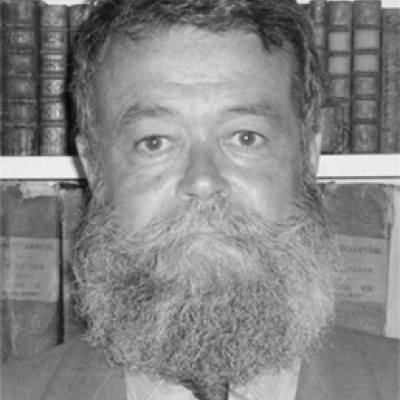
Le Cercle K2 n'entend donner ni approbation ni improbation aux opinions émises dans les publications (écrites et vidéos) qui restent propres à leur auteur.
Click here to see French translation.
Jun Zhou is an entrepreneur, consultant Social Media in China & music enthusiast.
---
Last week during lunchtime, out of curiosity two friends asked me how to listen to classic music and where to start if people never play instruments nor have any basic knowledge to understand how to appreciate it. Although neither do I have the answers nor do I know everything about classic music, as an enthusiast I have made a list of 8 songs to enjoy, hopefully, it will show a direction for a fun adventure to explore.
---
1. June: Barcarolle
“ Let us go to the shore;
there the waves will kiss our feet.
With mysterious sadness,
the stars will shine down on us. ”
- Aleksey Pleshcheyev
This piece is from “The Seasons” [1] composed by Russian composer Pyotr Ilyich Tchaikovsky who also wrote the famous ballet “Swan Lake”. There are 12 pieces for solo piano and each one is named by the month in The Seasons. Short poetic epigraphs from different poets were added to each piece when published, and for June it was written by a Russian radical poet Aleksey Pleshcheyev.
This song has a melancholy touch, nevertheless, you can still feel the calm and the peacefulness. Image yourself lying on a boat in the middle of the sea looking at the stars, without any directions, just floating with the waves and feeling the summer breeze.
Barcarolle [2] is a music style that usually creates a rocking rhythm, like evoking the rush of water by boat.
Listen :
(6 minutes)
Played by Sviatoslav Richter
Sviatoslav Richter [3] was a Soviet and Russian pianist and is regarded as one of the great pianists of all time.
2. Auf dem Wasser zu singen
This song is also a barcarolle style and also shares a similar melancholy touch, however, it is more intense than June, rather than floating smoothly with waves it sounds more like passing through drifting. It is originally composed by Franz Schubert based on the poem by Friedrich Leopold Graf zu Stolberg-Stolberg in the same name [4]. Later Franz Liszt transcribed the piece for solo piano. The creation vividly mimics the image from the poem.
“ In the midst of the shimmering, mirroring waves
Glides like swans the rocking boat
Ah, on softly shimmering waves of joy
Glides the soul away like the boat.
For from the heavens down on the waves
Dances the evening glow round about the boat.”
- Friedrich Leopold Graf zu Stolberg-Stolberg
Listen :
(4 minutes) Played by Evgeny Kissin
Evgeny Kissin [5] is a Russian pianist who was recognized as a child prodigy. He is famous for interpretations of the works in the Romantic Era, such as those of Franz Schubert, Frédéric Chopin, and Franz Liszt.
3. Tempest Sonata 3rd Movement
“Music is like a dream. One that I cannot hear.”
- Ludwig van Beethoven
Here comes another intense piece that is even more dramatic than the previous one, in which you can hear the rain dancing wildly with bitterness and sorrow. This piece is the third movement of “The Piano Sonata No. 17 in D minor” [6], a.k.a. “Tempest Sonata” composed by Beethoven in 1802 the year when his hearing was getting worse. The name of the song “Tempest Sonata” did not come from Beethoven but from a comment he made to his associate Anton Schindler. When Anton asked Beethoven how to interpret this work, Beethoven answered him to read “Shakespeare’s Tempest”. This work reflects his feelings of despair during that period of time. D minor is considered the saddest key and plays on our rawest emotions [7].
Listen :
(7 minutes)
Played by Wilhelm Kempff
Wilhelm Kempff [8] was a German pianist who is particularly known for the interpretation of Beethoven’s works, and remains one of the greatest pianists of all time.
4. La Campanella
La Campanella [9] is Italian for “The little bell” and it’s the nickname of the third of six etudes from “The Grandes études de Paganini, S. 141” which Franz Liszt revised based on the violin compositions by Niccolò Paganini. The melody is illustrated by the large intervals of sixteenth notes in the right hand to mimic the sounds of the bell, undoubtedly making the song widely regarded as one of the most difficult pieces for piano. There’s even a joke describing that Beethoven had hammer fingers whereas Liszt had octopus fingers.
What makes this piece beautiful is probably the thundering climax that builds through the extreme speed of high and low tinkling melody contradictions with unexpected scales in between, like taking a roller coaster of time traveling.
Listen :
(4minutes30)
Played by Evgeny Kissin
Evgeny Kissin [5] is a Russian pianist who was recognized as a child prodigy. He is famous for interpretations of the works in the Romantic Era, such as those of Franz Schubert, Frédéric Chopin, and Franz Liszt.
5. Nocturne in D flat major, Op. 27 No. 2
“ It really contains but one subject, and is a song of the sweet summer of two souls, for there is obvious meaning in the duality of voices. ”
-Huneker, James G. [10]
This piece is the second nocturne from “The Nocturnes, Op. 27” [11] composed by Frédéric Chopin when he was deeply in love and happy. It has numerous tensions, then the tensions aren’t just released but smooth away and build up again to another yet different tensions, unfolding illusionary with sort of hope feelings and even a bit of uncertainty emotions in a beautiful way, in which you can feel the whispering of love as well as the touch of passions.
Listen :
(6 minutes)
Played by Arthur Rubinstein
Arthur Rubinstein [12] was a Polish-American pianist who is regarded as one of the greatest pianists of all time, and one of the best Chopin interpreters.
6. Mélodie de “Orfeo ed Euridice”
The theme of this piece is also about love however it is rather bittersweet than pure joy. This piece is arranged by Giovanni Sgambati based on the famous opera “Orfeo ed Euridice” [13] composed by Christoph Willibald Gluck. The story behind the song comes from one of the most beautiful myths. The ancient legend of “Orfeo ed Euridice” is about the fateful love of Orfeo to his wife Euridice. With the symbol of love, the melody transforms the emotions into lightness and depth at the same time. It has well captured the tangled feelings of hope and sadness that are flowing throughout the notes exquisitely.
Listen :
Played by Sergei Rachmaninoff
Sergei Rachmaninoff [14] was a famous Russian composer and pianist. His works have been largely played by many pianists nowadays.
7. Erlkönig/Der Erlkönig
Here comes a dramatic, intense, and dark piece. Erlkönig [15] is composed by Franz Schubert according to the poem written by Johann Wolfgang von Goethe with the same name. The story in the poem was about a boy who was hunted by Erlkönig(Elf King) and the father tried to save him but failed in the end – the boy died. There are four characters in the music – the narrator, the father, the son, and Erlkönig (Elf King).
Because of its huge popularity, this work has been arranged by various composers such as Franz Liszt for solo piano and Heinrich Wilhelm Ernst for solo violin. It is absolutely remarkable that for both works in piano and violin the composer simply used one instrument to create a thundering dark drama for four different characters and all the characters are musically portrayed in different ranges and dynamics to create a grand scene. It is equally challenging for both pianists and violinists. The following performances are played by two passionate female artists. In each of their play, the great tensions and rich performance are carried out by their effortless yet powerful techniques as well as the delicate and precise interpretations.
Solo Piano
Listen :
(4 minutes 30)
Played by Yuja Wang
Yuja Wang [16] is a young Chinese pianist, a characteristic rising star with extraordinary techniques and fluid musicality.
Solo Violin
Listen :
(4 minutes 40 - music starting at 4:00)
Played by Hilary Hahn
Hilary Hahn [17] is an American violinist, a superstar who makes her violin flow and sing. Her performance is often characterized as “flawless”.
8. Danse Macabre
The final selection is Danse Macabre - dark, spooky, ironic, and humorous. This piece originally was composed by Camille Saint-Saëns [18] for orchestra. Shortly after the premiere, Franz Liszt made the arrangement for solo piano. Later Vladimir Horowitz made another arrangement based on Liszt’s transcription and this version has been played the most often nowadays. This piece is based on an old French myth about Death that every year at midnight on Halloween Death would call the skeletons from their graves to dance for him until the dawn.
Just like the title of the song, throughout the performance, the skeletons are dancing on the keyboards, celebrating their freedom before dawn.
Listen :
(8 minutes)
Played by Vladimir Horowitz
Vladimir Horowitz [19] was a Russian-born American pianist, considered one of the greatest pianists of all time. He was famous for the tone color and his virtuoso technique.
---
Bibliography
[1] "The Seasons (Tchaikovsky)," [Online]. Available: https://en.wikipedia.org/wiki/The_Seasons_(Tchaikovsky).
[2] F. Wilson, "All at Sea: The Barcarolle in Piano Music," 11 March 2021. [Online]. Available: https://interlude.hk/all-at-sea-the-barcarolle-in-piano-music/.
[3] "Sviatoslav Richter," [Online].
[4] "Auf dem Wasser zu singen," [Online]. Available: https://en.wikipedia.org/wiki/Auf_dem_Wasser_zu_singen.
[5] "Evgeny Kissin," [Online]. Available: https://en.wikipedia.org/wiki/Evgeny_Kissin.
[6] "Piano Sonata No. 17 (Beethoven)," [Online]. Available: https://en.wikipedia.org/wiki/Piano_Sonata_No._17_(Beethoven).
[7] K. WILSON, "The Heartbreak Key," 18 August 2021. [Online]. Available: https://www.rollingstone.com/pro/features/music-d-minor-saddest-key-1210591/.
[8] "Wilhelm Kempff," [Online]. Available: https://en.wikipedia.org/wiki/Wilhelm_Kempff.
[9] "La campanella," [Online]. Available: https://en.wikipedia.org/wiki/La_campanella.
[10] J. G. Huneker, Chopin: The Man and His Music, Dover Publications Inc., 1966.
[11] "Nocturnes, Op. 27 (Chopin)," [Online]. Available: https://en.wikipedia.org/wiki/Nocturnes,_Op._27_(Chopin)#cite_ref-huneker259_5-0.
[12] "Arthur Rubinstein," [Online]. Available: https://en.wikipedia.org/wiki/Arthur_Rubinstein.
[13] "Orfeo ed Euridice," [Online]. Available: https://en.wikipedia.org/wiki/Orfeo_ed_Euridice.
[14] "Sergei Rachmaninoff," [Online]. Available: https://en.wikipedia.org/wiki/Sergei_Rachmaninoff.
[15] "Erlkönig (Schubert)," [Online]. Available: https://en.wikipedia.org/wiki/Erlkönig_(Schubert).
[16] "Yuja Wang," [Online]. Available: https://en.wikipedia.org/wiki/Yuja_Wang.
[17] "Hilary Hahn," [Online]. Available: https://en.wikipedia.org/wiki/Hilary_Hahn
[18] "Danse macabre (Saint-Saëns)," [Online]. Available: https://en.wikipedia.org/wiki/Danse_macabre_(Saint-Saëns).
[19] "Vladimir Horowitz," [Online]. Available: https://en.wikipedia.org/wiki/Vladimir_Horowitz.
08/08/2022















